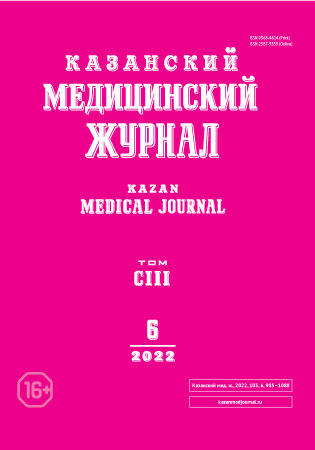Секреторная функция контралатеральных околоушных желёз
- Авторы: Щипский А.В.1, Калиматова М.М.1, Мухин П.Н.1
-
Учреждения:
- Московский государственный медико-стоматологический университет им. А.И. Евдокимова
- Выпуск: Том 103, № 6 (2022)
- Страницы: 1034-1039
- Раздел: Обмен клиническим опытом
- Статья получена: 27.10.2022
- Статья одобрена: 27.10.2022
- Статья опубликована: 02.12.2022
- URL: https://kazanmedjournal.ru/kazanmedj/article/view/112128
- DOI: https://doi.org/10.17816/KMJ112128
- ID: 112128
Цитировать
Полный текст
Аннотация
Актуальность. Исследование стало реакцией на статью о «физиологической асимметрии» слюнных желёз у правшей и левшей.
Цель. Оценить влияние стороны исследования на функцию околоушных желёз как возможный фактор, который необходимо учитывать при оценке результатов сиалометрии.
Материал и методы исследования. У 22 пациентов с ксеростомией провели контролируемую динамическую сиалометрию в два этапа. Второй этап — через неделю после первого. На первом этапе капсула Лешли находилась справа, катетер — слева, на втором этапе катетер был справа, капсула — слева. Сиалометрию выполняли утром, через 20 мин после приёма 8 капель 1% водного раствора пилокарпина, в течение 20 мин. Результаты с капсулой Лешли вне протока считали контрольными, результаты с катетером в протоке — контролируемыми. Это исключало технологическую погрешность измерения. Достоверность различий показателей сиалометрии оценивали с помощью статистического анализа с использованием t-критерия Стьюдента. Результаты считали достоверными при p ≤0,05.
Результаты. В группе с применением капсулы Лешли бо́льшие показатели сиалометрии справа обнаружили в 7 (31,8%) из 22 случаев, слева — в 13 (59,1%) из 22 случаев (p >0,05). В группе с применением катетера — соответственно в 15 (68,2%) из 22 случаев и в 5 (22,7%) из 22 случаев (t=3,4028; p <0,001). В единой выборке (капсула и катетер) — соответственно в 22 (50,0%) из 44 случаев и в 18 (40,9%) из 44 случаев (p >0,05). Результаты сравнения средних показателей справа, полученных в 22 случаях капсулой (1,2±0,6 мл), с показателями слева (1,3±0,7 мл) не показали достоверного различия (t=0,5254). Различия показателей сиалометрии катетером (1,0±0,7 мл справа и 0,8±0,7 мл слева) также не были достоверными (p >0,05).
Вывод. Секреторная функция контралатеральных околоушных желёз в сравнимых индивидуальных условиях одинаковая; объективно обусловленная функциональная симметрия упрощает анализ результатов исследования секреторной функции слюнных желёз.
Ключевые слова
Полный текст
Об авторах
Александр Васильевич Щипский
Московский государственный медико-стоматологический университет им. А.И. Евдокимова
Автор, ответственный за переписку.
Email: Sialocenter@mail.ru
ORCID iD: 0000-0002-2851-0171
докт. мед. наук, проф., каф. челюстно-лицевой хирургии и травматологии
Россия, г. Москва, РоссияМарина Магомедовна Калиматова
Московский государственный медико-стоматологический университет им. А.И. Евдокимова
Email: dockalimatova@mail.ru
ORCID iD: 0000-0002-0935-8936
асп., каф. челюстно-лицевой хирургии и травматологии
Россия, г. Москва, РоссияПавел Николаевич Мухин
Московский государственный медико-стоматологический университет им. А.И. Евдокимова
Email: panistom@mail.ru
ORCID iD: 0000-0002-8311-5529
канд. мед. наук, асс., каф. челюстно-лицевой хирургии и травматологии
Россия, г. Москва, РоссияСписок литературы
- Ромачева И.Ф., Юдин Л.А., Афанасьев В.В., Морозов А.Н. Заболевания и повреждения слюнных желёз. М.: Медицина; 1987. 238 с.
- Вавилова Т.П., Янушевич О.О., Островская И.Г. Слюна. Аналитические возможности и перспективы. М.: БИНОМ; 2014. 312 с.
- Афанасьев В.В., Мирзакулова У.Р. Слюнные железы. Болезни и травмы. Руководство для врачей. М.: ГЭОТАР-Медиа; 2019. 315 с.
- Комарова К.В., Раткина Н.Н. Распространённость ксеростомии среди пациентов амбулаторного стоматологического приёма. Фундаментальные исследования. 2014;(2):82–84. EDN: RZQTOD.
- Щипский А.В. Ксеростомия, гипосаливация и нарушение экскреторной (эвакуаторной) функции слюнных желёз (обзор). Пародонтология. 2002;(3):45–50.
- Симонова М.В., Раденска-Лоповок С.Г. Поражение слюнных желёз при синдроме и болезни Шёгрена. Диагноз. Дифференциальный диагноз. Практические рекомендации для врачей-стоматологов. Под ред. В.А. Насоновой. M.: ПКСТС; 2010. 153 с.
- Андреева Т.Б. Опыт изучения функции больших слюнных желёз человека. Стоматология. 1965;(2):39–43.
- Lashley KS. Reflex secretions of the parotid gland. J Exp Psychol. 1916;1:461–493. doi: 10.1037/h0073282.
- Пестова В.Н., Зайцева Е.А. Методы сбора слюны для учёта асимметрии саливации у правшей и левшей. Вятский медицинский вестник. 2009;(1):115–116. EDN: OXUVUL.
- Щипский А.В., Шакирова Р.Р., Лекомцева Ю.В. Признак стороны в состоянии зубов и пародонта у жителей большого города, обнаруженный в процессе эпидемиологического обследования, по данным осмотра и инструментального исследования. Пародонтология. 2020;25(4):331–336. doi: 10.33925/1683-3759-2020-25-4-331-336.
- Щипский А.В., Афанасьев В.В. Экспериментальное изучение возможного влияния острого сиаладенита на состояние контралатеральных слюнных желёз. Пародонтология. 2002;(4):47–50.
- Бондаренко И.А., Чеснокова Т.В. Полная транспозиция органов (клинический случай). Радиология — практика. 2014;(2):57–63. EDN: SCFDUL.
- Касимова Р.М., Тимошок А.Д. Полная транспозиция органов (клинический случай). Научное обозрение. Педагогические науки. 2019;(5-3):69–74. EDN: YZEPSD.
Дополнительные файлы








